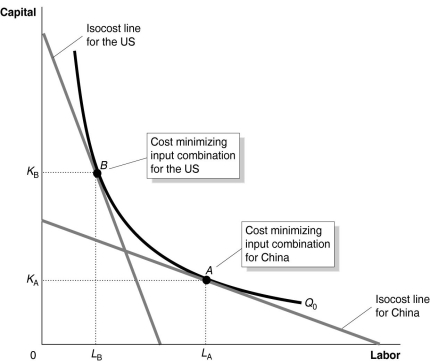Figure 11-14

Figure 11-14 shows the optimal input combinations for the production of a given quantity of cotton in the United States and in China.
-Refer to Figure 11-14.Consider the following statements:
A.For each country, the marginal product per dollar spent on labor equals to the marginal product per dollar spent on capital.
B.The price of labor is relatively higher in the United States than in China and the price of capital is relatively lower in the United States than in China.
C.The price of labor and the price of capital are relatively higher in the United States than in China.
Based on the figure, which of the statements above is true?
Definitions:
Aggregate Planning
A process by which a company determines ideal levels of capacity, production, subcontracting, inventory, and labor for medium-term future periods to meet forecasted demand.
Overtime
Additional time worked by an employee beyond the normal or legally defined working hours, usually compensated at a higher pay rate.
Subcontracting
The practice of assigning parts of a project or job to outside companies or specialists to capitalize on efficiency and expertise.
Regular Time
The standard hours that an employee is scheduled to work, excluding overtime or abnormal schedules.
Q47: A perfectly competitive apple farm produces 1,000
Q88: Refer to Figure 12-1.If the firm is
Q97: If a typical firm in a perfectly
Q105: Marginal cost is equal to the<br>A)change in
Q145: The ultimatum game and the dictator game
Q236: In the short run, why does a
Q253: In a decreasing-cost industry, the entry of
Q266: An industry's long-run supply curve shows<br>A)the relationship
Q268: If a firm shuts down it<br>A)will suffer
Q310: In his book The Wealth of Nations,